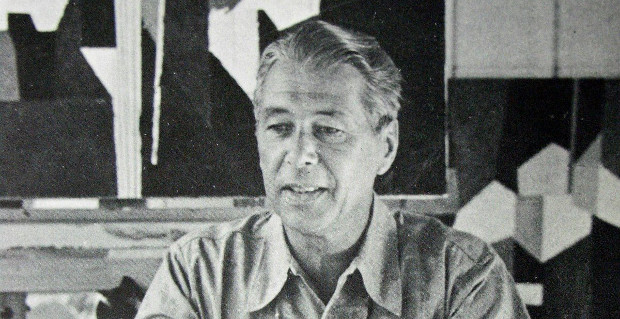
Herbert Bayer is a celebrated twentieth century Austrian-American versatile artist. His artistic skills include graphic designing, sculpturing, photography, painting, architect, exterior and interior designing and art direction. He was considered the last living member of the Bauhaus and known to have caused seminal development of the Atlantic Richfield Company’s corporate art collection.
Born on April 5, 1900, Bayer grew up in Haag, Austria-Hungary. In Linz he was apprenticed to the artist Georg Schmidthammer. He withdrew from the apprenticeship in favor of studying at the Darmstadt Artists’ Colony. He was fascinated by the Bauhaus manifesto by Walter Gropius. His skills thrived under the supervision of some of the eminent artists of his time, such as László Moholy-Nagy, Wassily Kandinsky and Paul Klee. Later he was appointed the director of printing and advertising by Walter Gropius. Bayer adopted the reductive minimalism method for the most Bauhaus publications, employing all-lowercase, sans serif typefaces. Similar to the other typographers of his time, Kurt Schwitters and Jan Tschichold, he also tried to design typeface based on simplified phonetic alphabets.
Bayer spent five years trying to design a geometric sans-serif Proposal for a Universal Typeface. However, it only maintained the status of design and never made it to the type category. Now with the advent of technology, these designs are adopted in digital form as Bayer Universal. ITC Bauhaus and Architype Bayer also owe their existence to these designs. In 1928, Bayer resigned from the post at the Bauhaus as he accepted the opportunity to become art director of Vogue magazine located in Berlin. Compared to other progressives he stayed in Germany far longer. During the 1936 Olympic Games, Bayer designed a brochure in the spirit of games, celebrating the Third Reich and Hitler’s ‘tyranny’. With the turn of events, his body of work was labeled “Degenerate Art” in the Nazi propaganda exhibition. Consequently, he left Germany in 1937 and moved to Italy. The following year he resettled in New York City, United States. The decision to relocate to U.S worked in his favor as he enjoyed a life-long successful career there.
In 1944, he married a Dada artist, Mina Loy’s daughter Joella Syrara Haweis. Two years later he moved to Aspen, Colorado as he was offered a job by industrialist and visionary Walter Paepcke. He put his architectural skills to work and designed the Aspen Institute and restored the Wheeler Opera House. In late 1950s, he began working on phonetic alphabets again and designed one without capital letters. He created special symbols for some of the common suffixes, such as -ed, -ory, -ing, and –ion.
Bayer had an opportunity to meet the successful oilman, Robert O. Anderson. Soon, the mere acquaintance turned into life-long friendship. Anderson founded the Atlantic Richfield Company that held his personal art collection and for the management of the collection he appointed Bayer ARCO’s Art and Design Consultant. He supervised the construction of ARCO Plaza in Los Angeles and created its corporate identity. Bayer designed a monumental sculpture-fountain Double Ascension for ARCO Plaza, upon Anderson’s request. Under Bayer’s expert supervision and direction the art collection exceeded thirty thousand artworks stored at the ARCO nationwide. The art collection possessed by ARCO was eclectic in nature, ranging from a wide variety of historic and contemporary paintings, sculptures, ethnic art to other precious artifacts. Bayer maintained and expanded the art collection until death claimed him in 1985. Herbert Bayer received Ambassador’s Award for Excellence and was inducted into the Hall of Fame by the Art Directors Club for his invaluable contribution to art.

